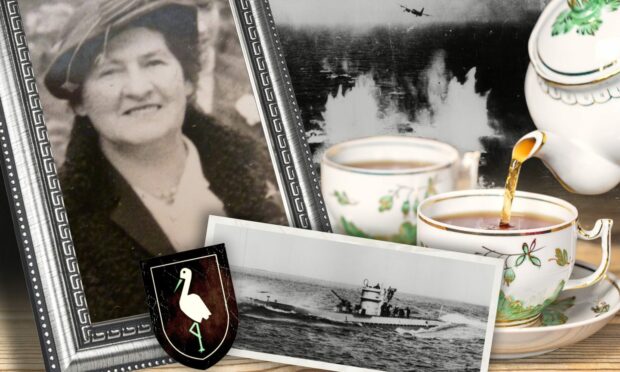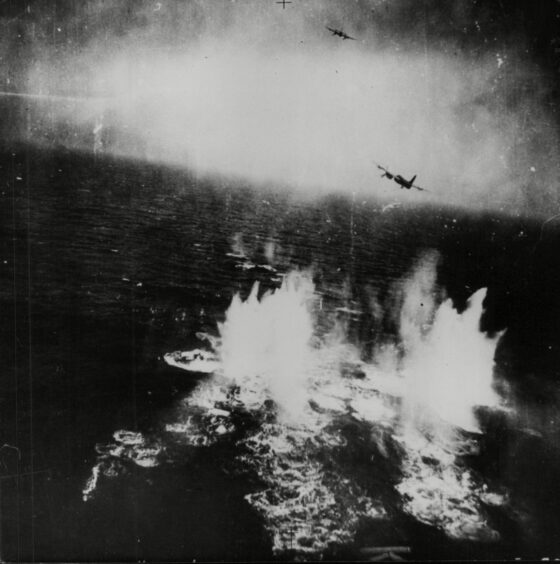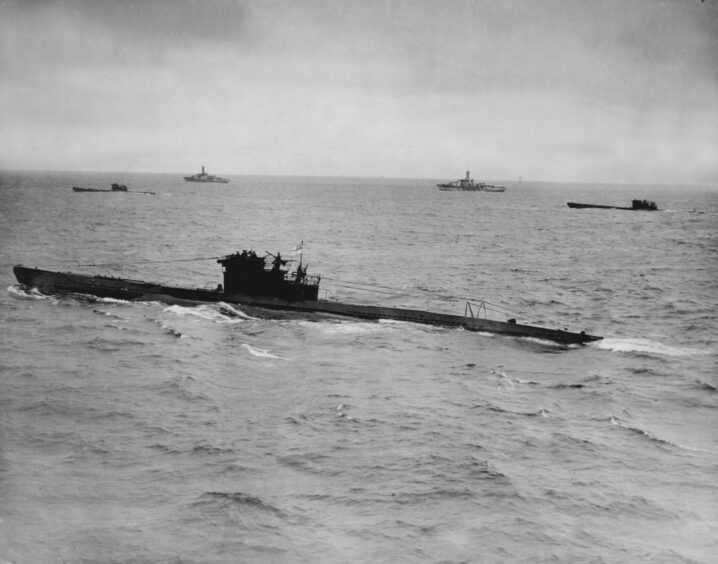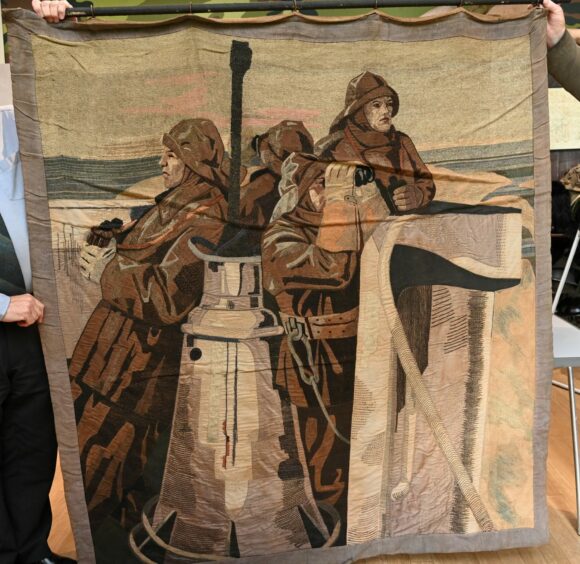Saturday April 14, 1945. The crew of a scuttled German U-boat, U-1206, wash up in a dinghy on the coast of Aberdeenshire.
The six men have been through a night of pure hell, during which three of their fellow crew had died.
But the survivors wonder if worse awaits them.
They know by now that they’ve lost the war.
They also know there is implacable hatred towards their nation by the residents of north-east Scotland after the Luftwaffe had bombed their area mercilessly, strafing playgrounds and streets.
After the carpet bombing by the Allies of German cities, the war had turned very ugly.
Cruden Bay
So the Germans fear what might be coming their way when they show up at Whiteshin Farm near Cruden Bay.
Luckily they’ve come to the door of no-nonsense farmer Mary Pratt.
After taking one look at the exhausted, haggard men, she said: “Would you like to come in for a cup of tea?”
In the eyes of author Mike Shepherd, that makes Mary Pratt forever a heroine in his eyes.
Mike tells her story in his latest release North Sea Heroes: True Stories from a Scottish Shore.
He said: “The prevailing mood in Aberdeenshire at the end of the war was one of hatred and revulsion at the Nazis, and understandably so.
“Yet, Mary Pratt ignored all that was expected of her by her neighbours.
“Seeing past all hate, she could sense individual sufferings for what it was, and then did something about it.”
The first part of the story has made its way around the media over the years with headlines like ‘The Toilet That Sank a Nazi U-Boat’.
Mike’s deep delve into what led up to Mary Pratt’s act of human kindness is laid out in detail in his new book, and questions the popular notion that U-boat U-1206 sank because the captain used a faulty toilet on board, causing water and chlorine gas to gush in.
The batteries were covered in seawater, control had been lost and they were now under fire from British planes.
U-boat allowed to sink
The submarine’s captain, Karl-Adolf Schlitt said at that point he decided to let the ship sink.
Three were drowned, thirty-seven made it away in dinghies.
In 2012, after a decade of searching, Buchan Divers found the U-1206 280 feet below the surface, 11 miles east of Collieston.
Their view then was that as the casing of the ship was undamaged, U-1206 must have settled gently, after firing off her remaining torpedoes.
Mike thinks it likely that the captain deliberately allowed the boat to go down in order to surrender, creating the leak story for cover to protect them from reprisals they would suffer in a POW camp.
“These were young men in their twenties with their lives ahead of them, so why should they take any risks now that the war is about to end?” he said.
Tantamount to suicide
“Overall, to be a crewmember on a German U-boat in 1945 is tantamount to taking part in a suicide mission.
“The statistics are grim: by the end of the Second World War, seventy-five per cent of all U-Boats built had been sunk or reported missing.”
Just before midnight, the trawler Nodzu rescued twenty-three men from two rafts and took them to Aberdeen.
Fourteen men on another raft, also carrying Captain Karl-Adolf Schlitt, were picked up by the Peterhead lobster boat Reaper, skippered by Alec John Stephen.
Meanwhile, the men in the fourth dinghy were in trouble as heavy seas drove them into sheer granite cliffs almost 200ft high.
Deaths that night
Three died that night, but the dinghy managed to get to an inlet known as the Gwight, a pebbly beach with a grassy slope.
Weak after twelve hours soaking wet in the dinghy on a bitterly cold night, the six managed to scale the cliff and were spotted by a local lad, Sandy Bain.
Sandy ran the two miles to the only phone in the area at the shop in Tillymaud to call the authorities.
Two of the crew made it to Mary Pratt’s front door at Whiteshin Farm, while the police rounded up the rest and took them to Peterhead police station.
Despite strong warning words from the men guarding the Germans, Mary Pratt led the submariners into her dining room, brought out her best china and made tea.
Mike writes: “Mary Pratt’s niece told me that the tea party was very civilised. The Germans brought out their emergency chocolate rations, now no longer required and shared them out.”
The crew were made prisoners of war, most likely at Tullos.
Mysterious twist
But there is a mysterious twist to this tale that P&J readers may be able to throw light on.
Did the men leave a legacy of their stay in the north-east, in the form of a large stitched artwork depicting what seems to be the crew of a surfaced German U-boat, keeping watch by the conning tower?
It turned up in Aberdeen recently, and there are ongoing attempts to find out more about it.
Mike said: “If this is an embroidery of a German U-boat of the type lying on the sea bed near Collieston, then it is believable that the men that came onshore in Aberdeenshire in 1945 made it while in the Tullos camp in Aberdeen.
“When they eventually went back home sometime after the war ended, they may have donated it to the Seamen’s Mission in Aberdeen as a memento of their time here.”
Approaches in Germany
After inconclusive attempts to find out more, approaches are now being made to the German Maritime Museum in Bremerhaven to see if they can throw any light on the mystery.
After the war Capt. Schlitt became a district administrator for the region of Oldenburg in Holstein.
He managed to return to Aberdeen much later to thank his rescuers.
He died on April 7, 2009 at the age of 90, having outlived all of his crew.
You might enjoy:
Can you help solve the mystery of this WW2 stitched artwork found in an Aberdeen cellar?








Conversation